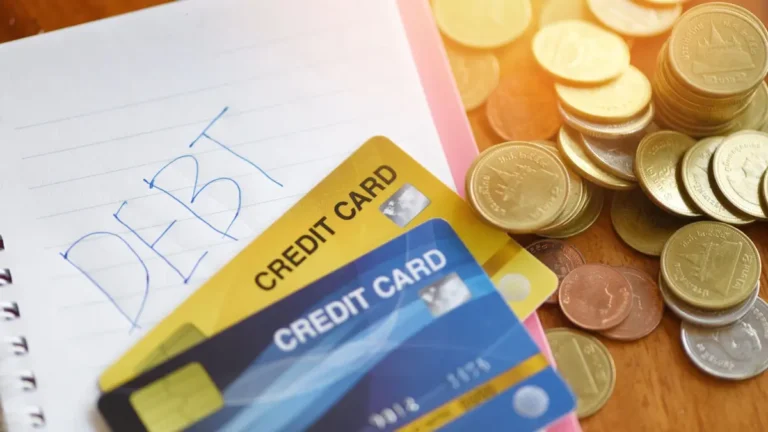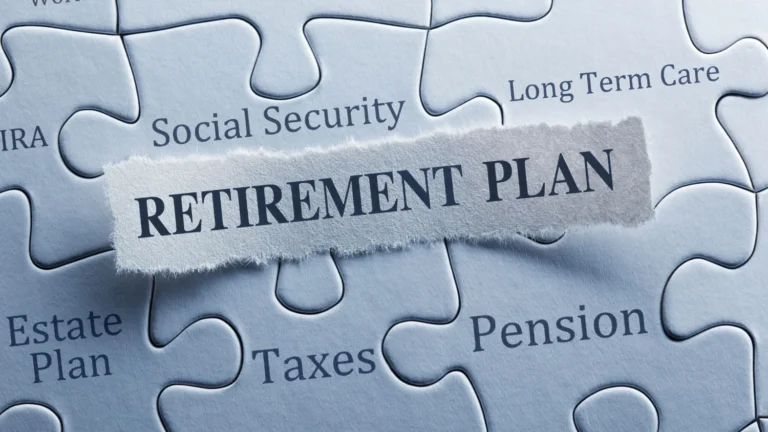A Fresh Start Towards Bankruptcy Recovery
Bankruptcy discharge marks a pivotal moment in the bankruptcy process, representing the legal conclusion where an individual is released from the obligation to repay specified debts. This mechanism is designed to provide a second chance by eliminating overwhelming financial burdens and paving the way toward rebuilding a stable financial future.
This guide delves into the essentials of achieving bankruptcy discharge, detailing the bankruptcy application process, necessary steps, and considerations to guide individuals on their journey to financial recuperation. Explore EDUdebt’s Consolidation Program
The Bankruptcy Discharge Process: An Overview
The discharge from bankruptcy isn’t automatic but requires navigating through a structured process that demonstrates all the creditors public interest and debtor’s commitment to resolving their financial dilemmas. Understanding and following the outlined steps and requirements of bankruptcy act is crucial for anyone seeking this significant milestone in financial recovery.
Key Steps in Applying for Bankruptcy Discharge
Achieving discharge involves a sequence of carefully orchestrated steps, each designed to move the individual closer to escaping the stringent regulation tied to being bankrupt.
Meet the Target Contribution
The foundation of the discharge process is fulfilling the Target Contribution—a predetermined amount meaningful income that must be contributed towards debt repayment. Demonstrating adherence to this commitment is essential.
Set Financial Goals
Envisioning a future beyond bankruptcy is vital. Setting tangible goals, such as emergency savings, improving credit scores, and planning for investments, can guide financial rebuilding efforts.
Craft a Detailed Budget
An actionable budget, delineating income, expenses, and allocations for debt repayment and savings, is fundamental. It aids in prioritizing expenditures and managing finances responsibly.
Maintain Stable Employment
Employment stability is crucial, not just for meeting current financial obligations but also for demonstrating a commitment to long-term financial recovery. Exploring additional employment or educational opportunities can bolster financial stability.
Exploring Alternatives: The Debt Settlement Proposal
Before proceeding with bankruptcy, individuals may consider a debt settlement proposal as an alternative path to financial recovery. This proposal involves negotiating with creditors to agree on a reduced amount of debt to be repaid, often facilitated by a financial advisor or a legal professional. The aim is to reach an agreement that allows for a manageable repayment plan, potentially avoiding the implications of bankruptcy.
It’s a strategic option for those who can afford to make a lump sum payment or follow a structured payment plan, offering a way to address outstanding debts while possibly preserving credit scores.
Engaging in a debt settlement proposal requires careful consideration and understanding of its impact on one’s financial situation, making it a critical step for those looking to regain financial stability.
Required Documents for the Discharge Application
The discharge application process necessitates the submission of specific documents, each playing a pivotal role in substantiating the application:
Sealed Copy of the Application
Ensures the confidentiality and formal submission of your discharge request.
Supporting Affidavit
Acts as a testament to the veracity of the information provided, underscoring the importance of accuracy and completeness.
Personal Service on the Trustee
Direct delivery of application documents to the trustee confirms their receipt and allows for immediate clarification of any ambiguities.
Evaluating Financial Standing: The Statement of Affairs
The Statement of Affairs, submitted within 21 days of receiving a Bankruptcy First Notice, is instrumental in assessing which assets may be retained and which are subject to creditor claims. This detailed document lists all assets, liabilities total debts, and income, providing creditors a transparent overview of financial position and the individual’s financial landscape to facilitate fair and equitable debt resolution.
Eligibility and Criteria for Bankruptcy Discharge
Qualifying for discharge is contingent upon satisfying one or more creditors specific criteria, underscoring the importance of due court action, compliance high court, and cooperation throughout the bankruptcy process:
Fulfillment of Bankruptcy Order Terms
Adherence to payment schedules, attendance at counseling sessions, and submission of financial documentation are non-negotiable requirements.
Avoidance of Bankruptcy Offenses
Transparency and honesty are paramount. Concealment of assets or falsification of information jeopardizes discharge eligibility.
Cooperation with the Official Assignee
Active participation and responsiveness to requests from the Official Assignee are essential for a favorable discharge outcome.
Meeting Filing Requirements
Eligibility for filing includes having a debt of at least $15,000, domicile in Singapore, and possession of both property and residency within the country and nothing more than $150,000.
Timeline for Bankruptcy Discharge Application
Understanding the timeline and adhering to key milestones are crucial for a smooth discharge process. From the initial declaration of bankruptcy to the final certificate of discharge, each phase must be navigated with diligence and adherence to prescribed deadlines.
First-Time Bankrupts: Navigating Towards Discharge
For first-time bankrupts, the path to discharge is fraught with both challenges and learning opportunities. Recognizing the impact of bankruptcy on financial standing, creditworthiness, and future financial services access is the first step in planning for life post-discharge.
Crafting a realistic budget, slowly rebuilding credit through secured means, and seeking professional financial advice are practical steps towards regaining financial stability.
Special Considerations for First-Time Bankrupts
For individuals navigating bankruptcy for the first time, the court experience can be daunting yet illuminating. Key considerations include:
- Understanding the Impact: Bankruptcy significantly affects one’s financial standing and creditworthiness. Awareness of these changes is crucial in planning for the future.
- Access to Financial Services: Post-bankruptcy, accessing traditional financial services may be challenging. Exploring alternative financial products and services designed for individuals in recovery can be beneficial.
- Steps for Financial Management Post-Discharge: Establishing a budget that reflects current financial realities, prioritizing savings, and responsibly rebuilding credit are essential steps. Engaging with financial education resources and professional advice can provide guidance and support.
Monthly Contributions: A Pillar of Discharge Eligibility
The role of Monthly Contributions in determining discharge eligibility cannot be overstated. These contributions, reflective of the debtor’s financial capability, are crucial indicators of the commitment to resolving financial obligations.
Fulfilling these monthly contribution contributions as per the Target Contribution schedule is essential for demonstrating financial responsibility and paving the way towards discharge and, ultimately, financial rehabilitation.
A Journey Towards Financial Renewal
Bankruptcy discharge represents not that bankruptcy status is just the culmination of a challenging journey but a bankrupt’s discharge is the beginning of a new chapter in financial management and personal growth.
By meticulously following the steps outlined, adhering to the requirements, and embracing the spirit of financial rehabilitation, individuals can navigate through the complexities of bankruptcy towards a brighter, more stable financial future.
The Role of Monthly Contributions
Monthly contributions are more than just payments; they are reflections of an individual’s commitment to rectifying past financial missteps. These contributions:
- Demonstrate Financial Responsibility: Regular, timely payments towards the Target Contribution signal a responsible approach to financial obligations.
- Impact Discharge Eligibility: Fulfilling these contributions is a critical factor in determining eligibility for discharge, marking progress towards financial freedom.
- Encourage Employment Stability: The necessity of making monthly contributions underscores the importance of stable employment and financial planning.
Moving Forward: Life After Bankruptcy
Achieving a bankruptcy discharge marks not only a significant milestone but also the commencement of an ongoing journey towards sound financial stewardship. As you navigate this path, understanding your predispositions towards debt is crucial. Are certain habits or attitudes drawing you repeatedly into financial distress?
Explore whether you might be exhibiting traits of a ‘Debt Magnet‘ and learn strategies to break free from this cycle. This knowledge is essential for anyone looking to build a healthier, more secure financial future post-bankruptcy.
A strategic approach to all your assets and bankruptcy estate management
- Building a Strong Financial Foundation: Start with creating a comprehensive budget, setting realistic financial goals, and establishing an emergency fund to mitigate future financial crises.
- Rebuilding Credit Wisely: Approach credit rebuilding with caution, starting with secured credit options and gradually progressing to traditional credit, always prioritizing timely payments and responsible credit use.
- Engaging in Financial Education: Continual learning about financial management, investment, and savings strategies can empower individuals to make informed decisions and avoid future financial pitfalls.
- Seeking Professional Guidance: Consulting with financial advisors or counselors can provide tailored advice and strategies to navigate post-bankruptcy challenges and opportunities.
Rebuilding with a Private Trustee Guidance
Emerging from bankruptcy marks the beginning of a new financial journey. Private Trustees, registered under the Private Trustees in Bankruptcy (PTIB) scheme, offer specialized expertise to navigate the complexities of financial rehabilitation and ensure a smooth transition into a stable financial future.
A Private Trustee can play a vital role in guiding individuals through the post-discharge landscape, offering advice on rebuilding credit, managing finances responsibly, and avoiding future financial pitfalls or bankruptcy offences.
For those seeking the support of a Private Trustee managing your affairs, it’s essential to choose a reputable professional. The Ministry of Law maintains a comprehensive list of registered Private Trustees in Bankruptcy (PTIBs), or enquire with any established debt consultancy for ease of access.
Conclusion
Bankruptcy discharge offers a path to relieve overwhelming debt and provides a fresh start. However, this fresh start comes with the responsibility of making informed and prudent financial decisions. The journey towards discharge and beyond is fraught with challenges but also offers opportunities for growth and learning.




